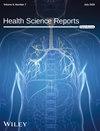Tuberculosis Trends in the Post-COVID-19 Era: Is It Going to be a Global Concern?
Abstract
Background and Aims
Tuberculosis (TB), a leading cause of death from infectious diseases, faced considerable challenges during the coronavirus disease 2019 (COVID-19) pandemic. This review examines the impact of pandemic-related disruptions, including the diversion of healthcare resources, reduced access to TB diagnostics and treatment, and declining BCG vaccination rates, on TB trends. The aim is to forecast the post-COVID-19 TB burden, identify risk factors that exacerbate transmission, and propose strategies to prevent a global resurgence.
Methods
This narrative review incorporates epidemiological data, modeling research, and reports from the World Health Organization and national health systems. It examines TB trends before and after COVID-19, the outcomes of coinfection, and the pandemic's impact on immunology, socioeconomic factors, and health systems. The review also compares trends in India and South Africa—two countries facing significant challenges—to those observed during the COVID-19 pandemic.
Results
COVID-19 disruptions in healthcare led to an 18% decrease in TB notifications in 2020, resulting in delayed diagnoses, increased household transmission, and higher mortality. Immune dysregulation, including T-cell depletion and cytokine storms, contributed to a 12.3% mortality rate in COVID-19-TB coinfections. Models predict a 5%–15% rise in TB incidence and an additional 1.4 million deaths by 2025. Individuals with HIV, diabetes, and malnutrition were particularly vulnerable. Factors such as overcrowding, air pollution, and reduced Bacillus Calmette–Guérin (BCG) coverage in endemic regions have further heightened susceptibility to TB.
Conclusion
COVID-19 has undone years of progress in TB control, highlighting the need for a unified health strategy. Early diagnosis, treatment of latent TB, and BCG catch-up initiatives are crucial. Strengthening health systems, addressing socioeconomic factors such as poverty and hunger, and utilizing pandemic advancements like telemedicine and vaccine research will be key to preventing a resurgence of TB. Continued financial support and international cooperation are essential to eliminating TB by 2030.

 求助内容:
求助内容: 应助结果提醒方式:
应助结果提醒方式:


